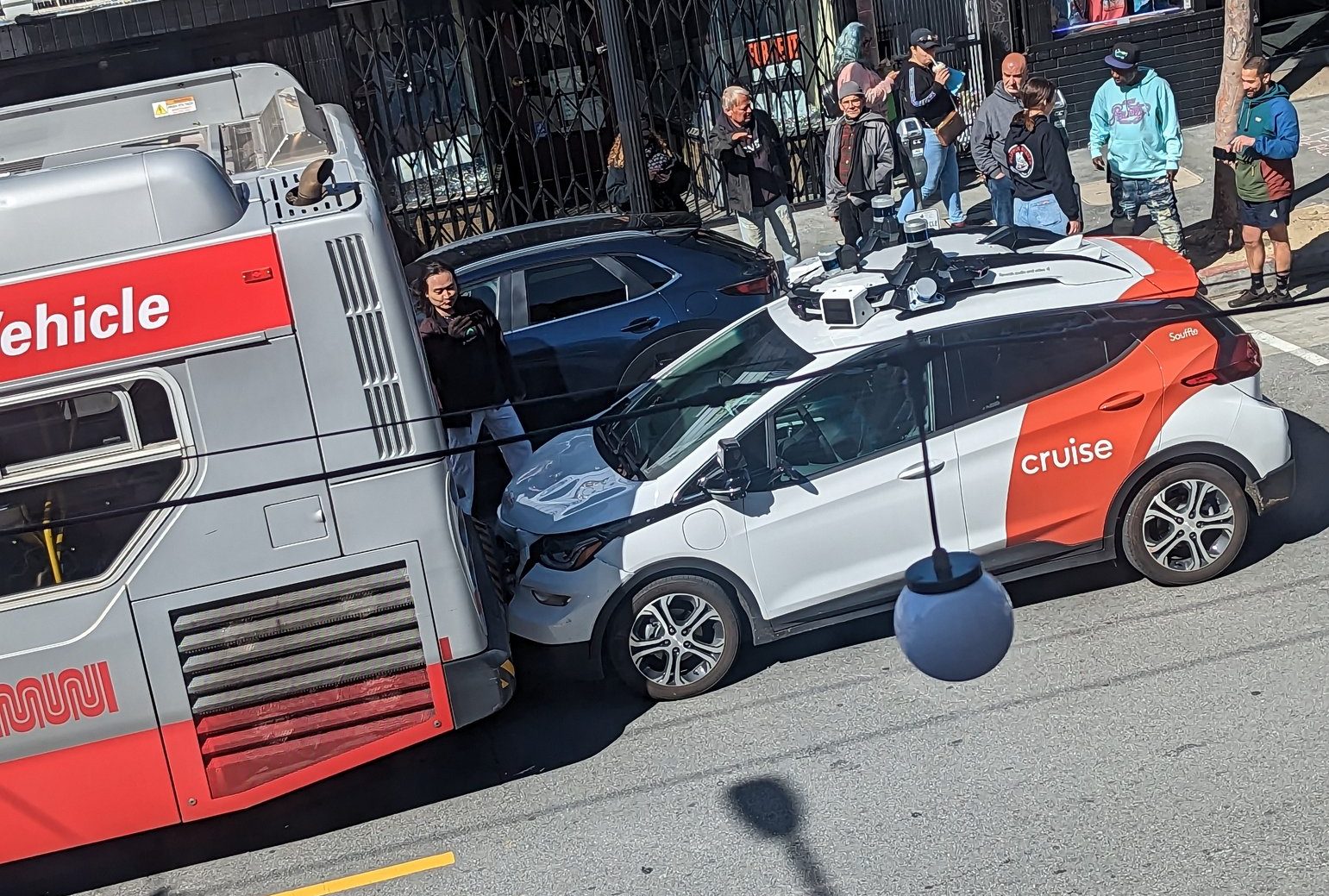In a recent incident, a Cruise robotaxi, which was operating without a safety driver, collided with a bus belonging to the San Francisco Municipal Transportation Agency (Muni). Fortunately, no injuries were reported, but the bus suffered some minor damage, while the front bumper of the Cruise vehicle was considerably more affected.

At the time of the incident, the Cruise robotaxi was not carrying any passengers. The GM self-driving unit addressed the incident in a brief statement: “Yesterday, one of our vehicles made contact with the rear of a Muni bus. No injuries were reported, and there were no passengers present in the Cruise AV. We are investigating the incident and will take follow-up actions if appropriate.”
This afternoon, one of our vehicles made contact with the rear of a Muni bus. No injuries were reported, there were no passengers present in the Cruise AV, and it has been cleared from the scene.
— cruise (@Cruise) March 24, 2023
After analyzing Cruise’s statement and a photo of the event, it seems that the robotaxi collided with the bus at a relatively slow pace. The image shared on social media depicts the robotaxi still in contact with the bus, and the impact occurred soon after a bus stop, suggesting a low-speed collision, as reported by Forbes. Moreover, the airbags in the Cruise vehicle did not deploy, as visible in the photo. This incident underscores the necessity for Cruise to enhance its robotaxi fleet’s performance in San Francisco for practical usage. It may be inferred that the robotaxi’s sensor suite should have identified the Muni bus, prompting the vehicle to halt before the accident.
San Francisco incident
In a separate recent incident, a Cruise robotaxi encountered fallen trolley wires during a high-wind storm. The vehicle drove through “caution” tape that closed off a road and collided with the non-live wires. While twisted caution tape may be difficult for sensors such as LIDAR and radar systems to detect, trolley cables are thicker and more visible. Although the recent storms in San Francisco presented challenges, it can be assumed that Cruise simulated such scenarios during its robotaxis’ training and testing processes. The Muni bus and trolley wire incidents emphasize the importance of real-world testing and edge case training for robotaxis to ensure their safe operation. This is something that other companies, such as Waymo and Tesla, pursuing robotaxi technology should prioritize as well.
Ensuring the safety of passengers and pedestrians must remain the top priority for autonomous vehicle companies. Thus, they must conduct thorough testing in diverse and challenging environments to identify and address potential hazards. By doing so, they can build trust and confidence in the technology and pave the way for its widespread adoption. Additionally, sharing their findings with regulators and the public can facilitate constructive conversations and further collaboration towards achieving the shared goal of safer roads.












